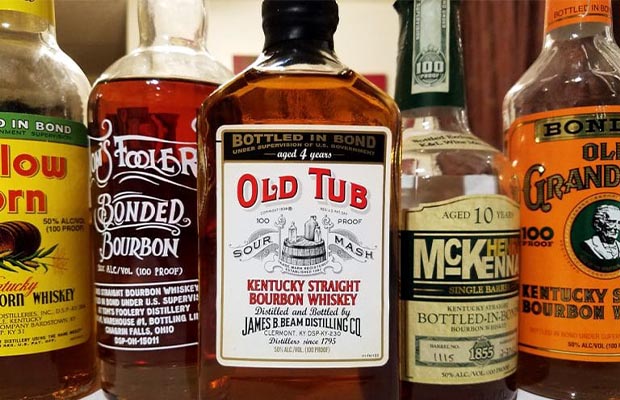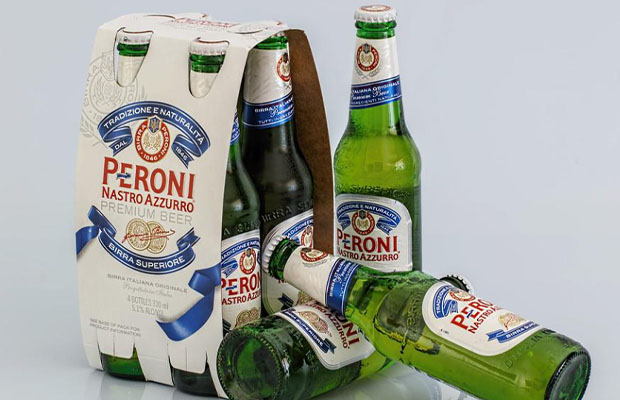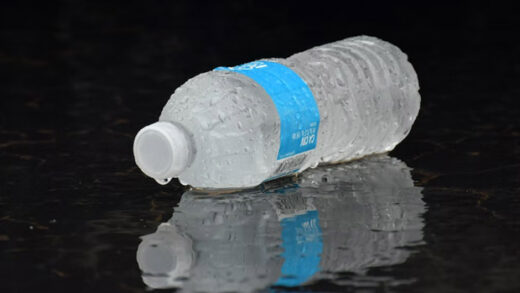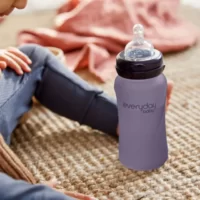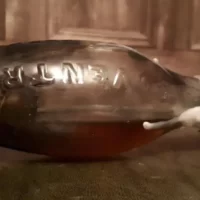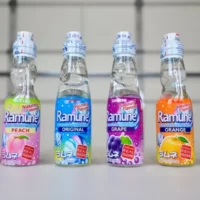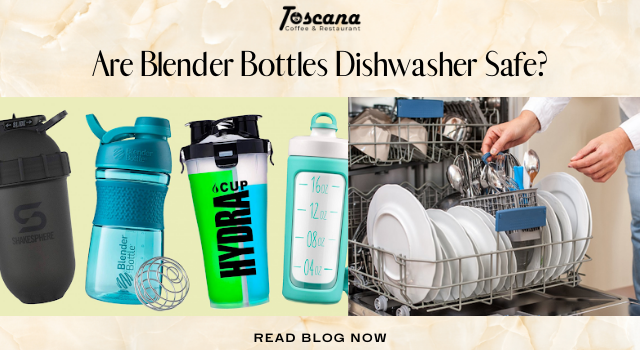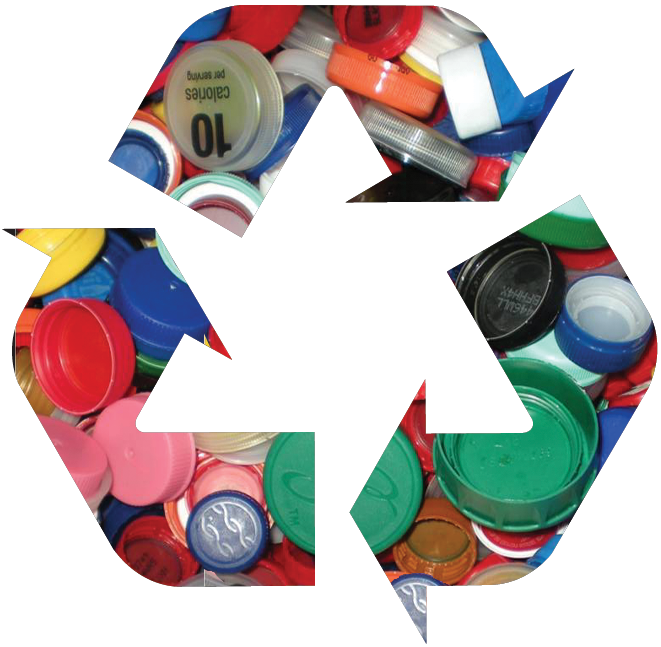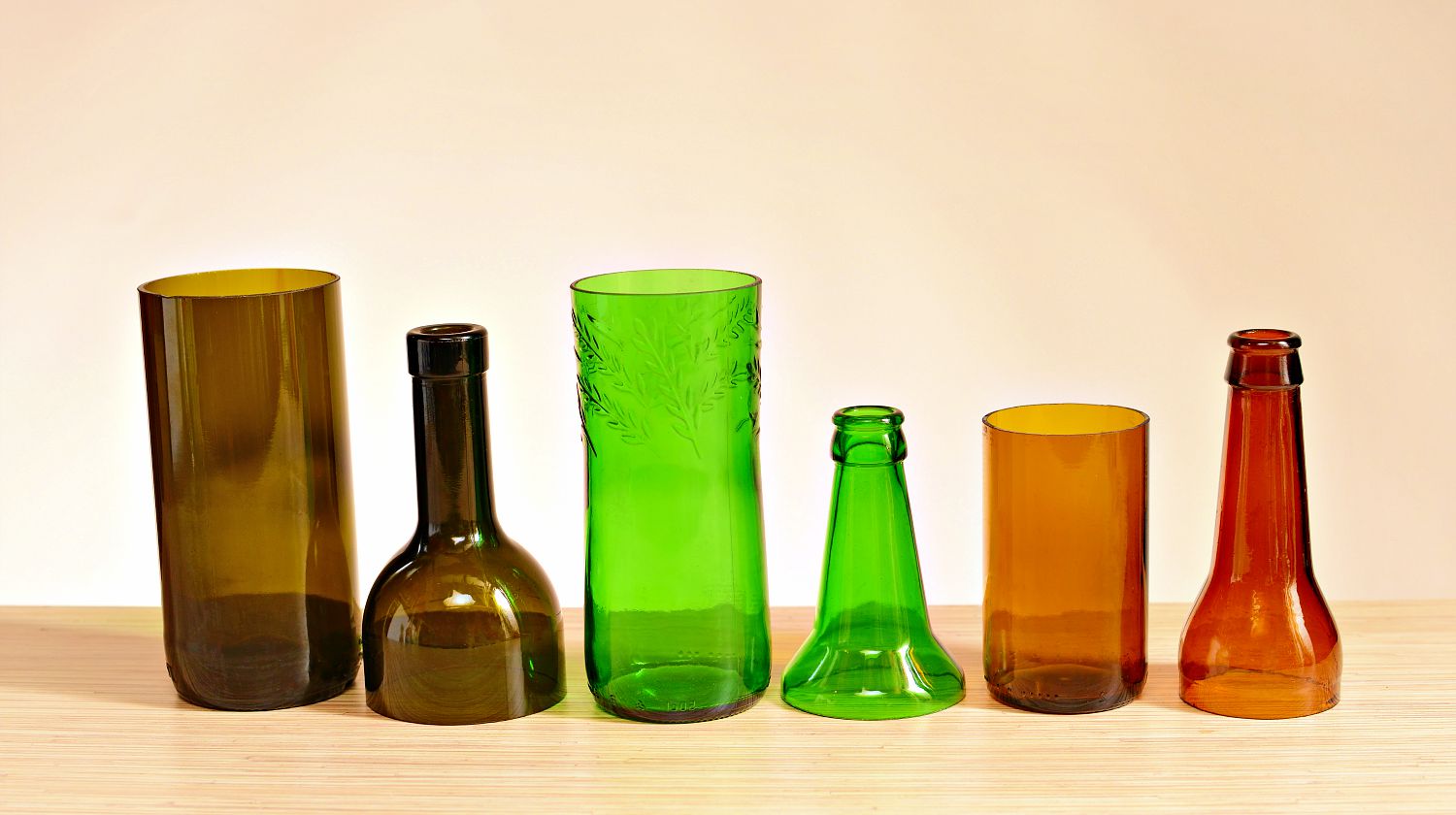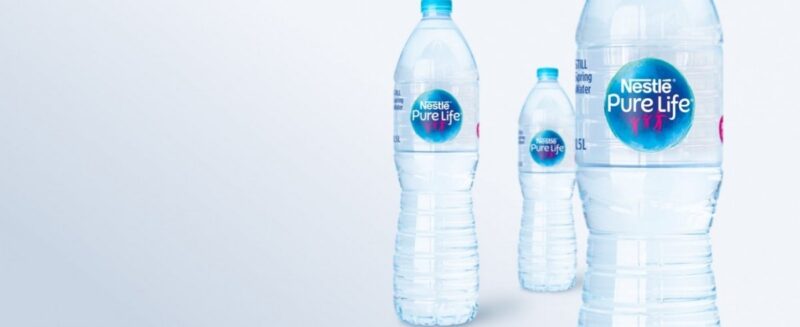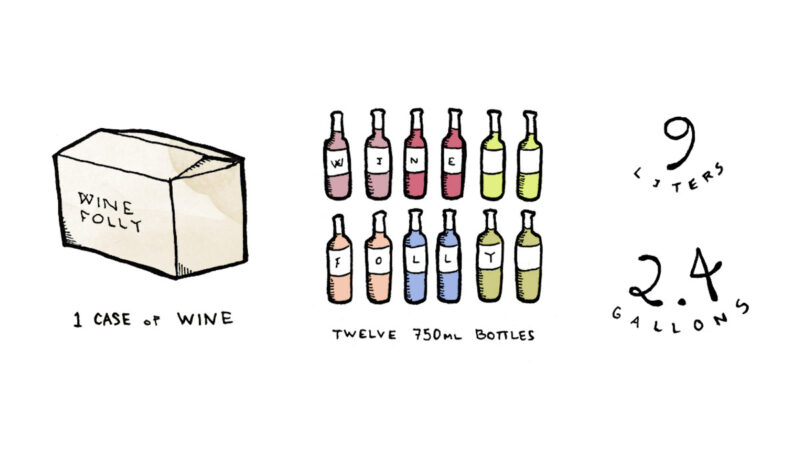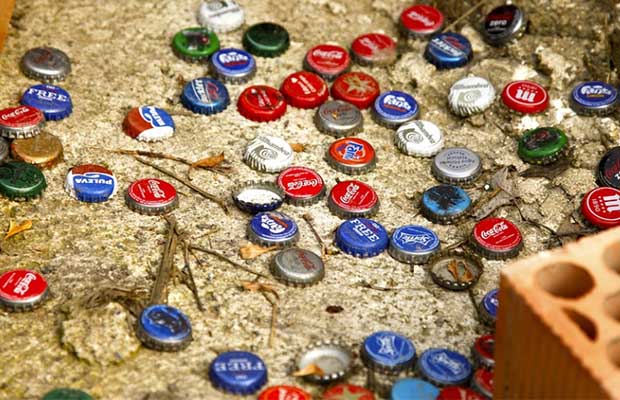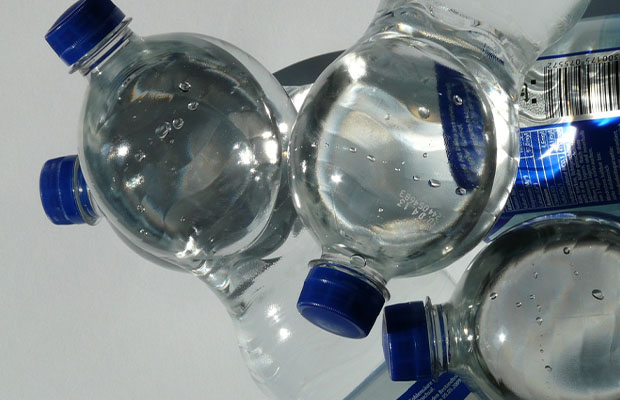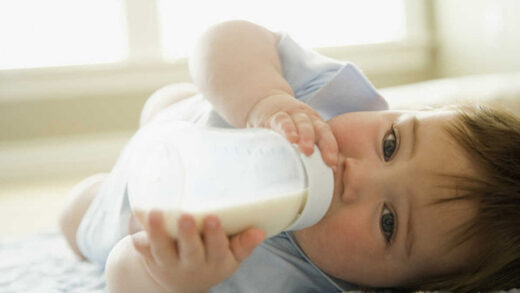The sound of your infant sobbing uncontrollably will break your heart more than anything. You might be unsure of what to do to comfort them if colic, gas, or acid reflux is the reason behind their crying. You may feel like you’ll do anything to stop the issue because watching your child suffer can be so stressful (and draining).
Thankfully, there are some products that say they can help if your baby is bottle-fed! There are actual anti-colic bottles.
It can be challenging to decide which anti-colic bottle to use when there are so many on the market promising to ease all of your baby’s digestive issues. The best anti-colic bottles are ones that contain a vent or valve system and a slow-flow nipple.
In case you need assistance choosing which anti-colic bottles to try, we’ll share our favorites with you.
More Baby Bottles Posts:
Table of Contents
Best Anti-colic Bottles: Our Top Pick
- 1. Dr. Brown’s Natural Anti-Colic Bottle: Best Internal Vent Bottle
- 2. Playtex Ventaire Baby Bottle: Best Bottle for Upright Feeding
- 3. Comotomo Baby Bottles: Best Anti-Colic Bottle for Breastfed Babies
- 4. MAM Anti-Colic Bottles: Best Vented Base Bottle
- 5. Philips Avent Anti-Colic Baby Bottles: Best Nipple Vent Bottle
- 6. Tommee Tippee Closer to Nature Bottles: Best Low-Flow Bottle
- 7. Munchkin Latch Bottles and Transition Cup: Best for Weaning
- 8. Nuk Simply Natural Bottles with SafeTemp: Best Functional
- 9. Nanobébé Breastmilk Bottle: Best Anti-colic Bottle For Newborns
Best Anti-colic Bottles Of 2022
The top 9 bottles to help prevent colic are listed below.
1. Dr. Brown’s Natural Anti-colic Bottle: Best Internal Vent Bottle
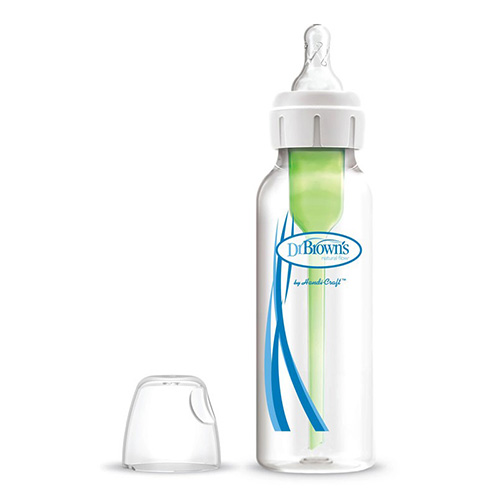
The Dr.’s distinguishing quality is his The internal venting mechanism is Brown’s bottle. Contrary to other anti-colic bottles, this one has a vent in the nipple collar instead of the nipple, which directs air through the vent and out above the milk.
Not only does this reduce air bubbles within the milk, but it also prevents the oxidation of nutrients as well, which has been clinically shown to result in more vitamins C, A, and E being retained.
The internal vent also relieves colic symptoms in babies by removing the vacuum that is produced by other bottles. Since there is never a vacuum in the breast or any pressure that needs to be released, it more closely resembles natural breastfeeding in this way.
This enables infants to feed at their own pace as opposed to the pace set by the nipple they are using.
Pros
- There is no vacuum inside the bottle due to a special internal venting system.
- BPA free.
- Dishwasher safe.
- maintains the nutrients in milk.
Cons
- Others dislike the version with the wide neck.
- Some people have trouble reading the markings on the bottle.
Related Reading: How To Use Dr. Brown’s bottles?
2. Playtex Ventaire Baby Bottle: Best Bottle For Upright Feeding
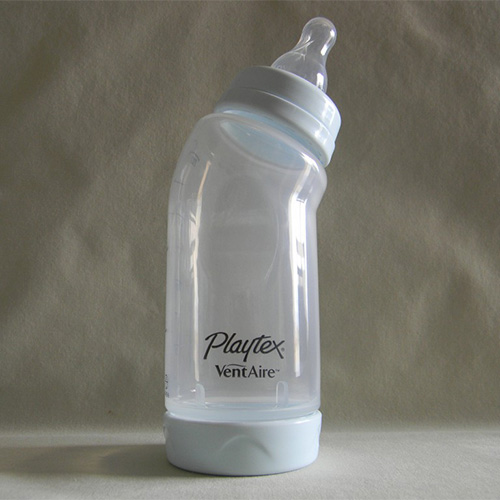
This Playtex bottle is angled so that you can comfortably hold it while your child is sitting up straight.
When air escapes from the base, it is directed up and away from the infant by micro-channel vents. By avoiding hand cramps while attempting to find a comfortable feeding position, you can prevent the onset of colic, gas, and indigestion symptoms.
These bottles fit a variety of nipple shapes and are free of BPA, phthalates, and PVC. While milk flow is one thing, your baby might fare better with a specific nipple shape that fits their mouth’s contours. Your baby won’t be gulping air because a good latch creates a tight seal.
These bottles have strong caps that keep the nipples clean and hygienic and come in 6 or 9-ounce sizes. This bottle’s design also makes it perfect for infants who are transitioning from breastfeeding or alternating between breast and bottle.
Pros
- To prevent confusion about the nipple, it is soft and skin-like.
- Comfortable to hold.
- Regulated flow is excellent for babies who occasionally choke or gag.
- Variety of interoperable nipples.
Cons
- It’s difficult to use in a baby bottle warmer.
- The screw-top is a little tricky to attach and, if done incorrectly, could result in leaks.
3. Comotomo Baby Bottles: Best Anti-colic Bottle For Breastfed Babies
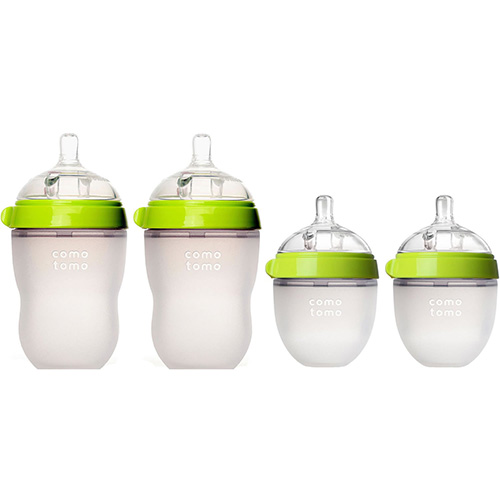
The nipple and bottle of these bottles are both made of flexible silicone, which makes them special. If the vacuum is not released, this permits a baby to continue feeding continuously unlike conventional, rigid bottles. The bottle can collapse if necessary, just like a real breast.
It has an extra-wide neck that makes cleaning it simple, and its bendable shape allows you to reach every part of it without using a bottle brush. However, you can simply put all of the parts in the dishwasher to clean them, so it is not even necessary to do that.
The nipple has two anti-colic vents that allow air and pressure to be gently released back into the bottle rather than being swallowed by the infant and resulting in gas. You can choose your baby’s favorite color from the green or pink versions of these bottles!
Pros
- Dishwasher safe are each of the four items.
- Flexible and natural-feeling.
- For self-feeding, compatible handles are available.
- One hole is present in a true slow-flow nipple.
Cons
- It might be challenging for the baby to grasp due to the flexible body.
- Volume markers on the bottle are not very visible.
4. Mam Anti-colic Bottles: Best Vented Base Bottle
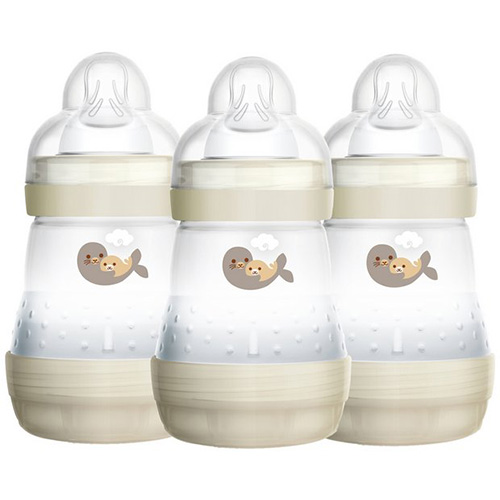
In order to relieve pressure and prevent air bubbles from entering your baby’s milk, this bottle has air vents at the bottom. This lowers the risk of gas and colic. It has an odorless, tasteless, and colorless silicone nipple inside. Similar to a natural nipple, this one is soft and somewhat flattened.
It might be a good option for mothers who decide to breastfeed and bottle-feed their children for this reason. A small baby may find it simpler to switch between the two and experience less nipple confusion as a result.
Since this bottle has more parts to wash due to the bottom vents, the makers made it so that it can self-sterilize in the microwave in three minutes, saving you the expense of purchasing an additional microwave steamer.
80% of parents reported lessened colic when using a MAM bottle, according to studies showing that 94% of babies accept them.
Pros
- Design that self-sterilizes enables microwave direct sterilization.
- Simple switching between breast and bottle.
- Dishwasher safe.
- Very affordable.
Cons
- The extra pieces mean more cleanup is required.
- comes with medium-flow nipples; you must buy slow-flow nipples separately.
5. Philips Avent Anti-colic Baby Bottles: Best Nipple Vent Bottle
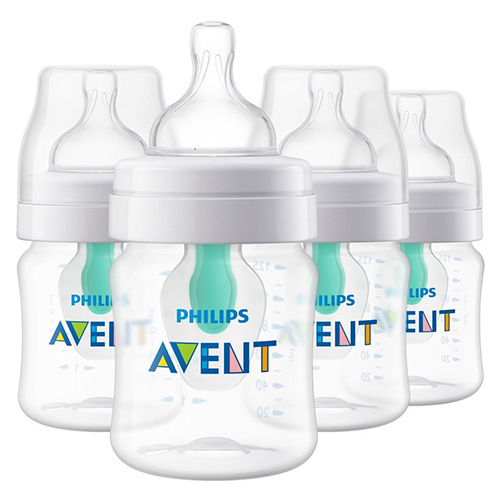
Sometimes keeping it simple is best when you’re a new mom. These Avent anti-colic bottles are made up of just four dishwasher-safe parts: the bottle, the nipple, the ring, and the cap.
They are also completely compatible with the rest of the Avent line, so if you have other conventional bottles, nipples, or toddler cups, the parts will be interchangeable, and you might be able to use them for the entirety of your baby’s early feeding years. There is no BPA in any of the bottles or nipples.
The main anti-gas feature is a special vent in the nipple that helps release air back into the top of the bottle and away from your baby. Hearing what a bottle is supposed to do is one thing, but having scientific proof to support it is quite another. These bottles were actually tested and shown to reduce infant nighttime fussiness by 60% over conventional bottles.
Pros
- Effortless, timeless style.
- Dishwasher-safe and easily cleanable.
- Nipple firmly to avoid collapsing.
- Clinically tested.
Cons
- Some babies find the lowest flow nipple, which has two holes, to be too swift.
- Parents have voiced concerns about leakiness.
6. Tommee Tippee Closer To Nature Bottles: Best Low-Flow Bottle
To prevent your child from feeding too quickly and upsetting their stomach, this Tommee Tippee set comes standard with a low flow nipple. The Stage 1 nipples have a valve that permits the pressure to release in addition to the slow flow speed.
Additionally, the wide base reduces the likelihood of a shallow latch or air swallowing by allowing your baby to latch in the same manner as they would to the breast. For a more realistic representation of the breastfeeding experience, the silicone tip flexes like the tip of a natural nipple.
Accurate volume markings on the side make it simple to see how much your baby is eating and help you avoid overfeeding, which can result in spitting up, abdominal pain, and gas. The wide-body design facilitates cleaning and allows parents to get close to their infant during feeding.
Pros
- Air and pressure can be let out through the nipple valve.
- Nipple flexes to resemble nursing.
- few pieces and an easy design.
- consists of nipples with low flow.
Cons
- Not dishwasher safe.
- There could be a slow nipple, which would ultimately result in more gas.
7. Munchkin Latch Bottles And Transition Cup: Best For Weaning
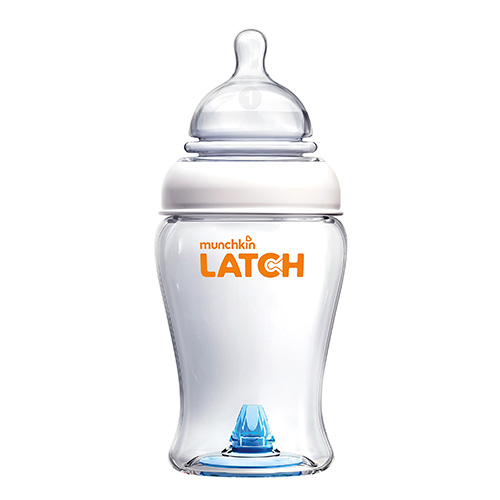
Munchkin manufactures premium baby bottles with an anti-colic valve at the base to stop gas. Parents adore how much the nipple stretches and moves, providing their child with a more natural feeding experience that helps them latch on and feed correctly.
If you choose Latch bottles and your child becomes accustomed to them, you can later switch to the transition cup without causing too much disruption. This cup has the same anti-colic mechanism at the base and a detachable handle that is simple to hold in small hands.
You can be confident that your child is not gulping or ingesting any air that will later come back to haunt them as they learn to drink from a cup and perfect their own feeding technique. The cup handles can be used on other cups and bottles, according to some mothers.
Pros
- The nipple is extremely adaptable and understanding.
- It is possible to remove the trainer cup’s ergonomic handle.
- They are very transportable thanks to the sturdy lid.
- range of nipples that are compatible.
Cons
- For some infants and toddlers, the flow of the transition cup may be excruciatingly slow.
- For some kids, the nipple of the transition cup might be too big.
8. Nuk Simply Natural Bottles With Safetemp: Best Functional
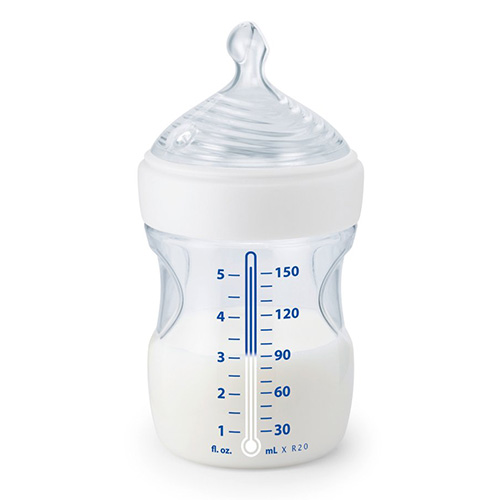
The nipple of Nuk Simply Natural bottles features an advanced 1-piece anti-colic air vent that helps lessen colic, gas, and spit-up. To make the nipple feel more like a mother’s breast, it has three holes instead of one (three for nipples with slow flows, more for higher flows).
Pros
- Advanced 1-piece anti-colic air vent
- Multiple nipple holes provide a natural feed, like mother’s breast
- Features SafeTemp indicator which changes colors if baby’s milk is too hot
Cons
- Some mothers reported that when their baby drank from the bottle, the nipple would collapse.
9. Nanobébé Breastmilk Bottle: Best Anti-colic Bottle For Newborns
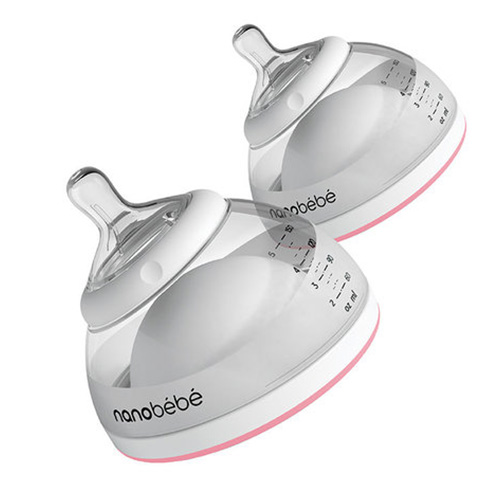
This bottle can be used to feed, warm, store, and pump. For effective storage, these bottles can be stacked, and to make things even simpler, the manufacturer sells a breast pump adaptor.
The nipple has a double vent system that lowers air pressure and quickly cools milk to help prevent bacterial growth. Small hands benefit from the small size as well!
Pros
- Double vent system
- Prevent bacterial growth
Cons
- Some parents found the bottle hard to close and as your baby grows
What Is Colic?
A baby who is otherwise healthy and exhibits three or more hours of crying per day, three or more days a week, for at least three weeks, is said to be experiencing colic. It typically manifests during the first three to six weeks of a baby’s life.
Colic is a short-term health issue that should hopefully get better on its own over time, but according to the American Academy of Pediatricians, 20% of all infants experience it. (So, you’re not alone!)
Colic may strike suddenly. There is no known cause of colic, but it could be triggered by:
- hunger
- acid reflux
- gas
- overfeeding
- the presence of cow milk proteins in breast milk
- reaction to specific type of formula
- an underdeveloped nervous system
How Does Anti-colic Bottle Work?
Babies frequently swallow air, especially during feedings, which causes gas to build up in their digestive systems. A vicious cycle can result when colicky babies continuously cry because they additionally risk suckling air.
An anti-colic bottle is made to minimize gas bubbles in the stomach, minimize air swallowed during feeds, and moderate food intake. This may lessen any colicky crying brought on by gas and overeating.
What precisely does an anti-colic bottle do to lessen air swallowed? They may have:
- a variety of nipple flow options to help get the milk flowing at just the right speed
- bottle nipples designed to lessen the chance of air in the tip
- valve systems to ensure your bottle doesn’t turn into an air vacuum
- an angled shape to help keep baby more upright while feeding
- optional vent systems to keep air from traveling through the milk, creating more bubbles
Buying Guide For Best Anti-colic Bottles
Nipple Flow Rate
For babies with gas problems, especially newborns, a slow-flow nipple is typically the best option. When drinking from the bottle, the infant moves more slowly thanks to the slower flow rate. Consequently, your baby will swallow fewer air bubbles.
Even as they grow bigger, some infants do, however, prefer a faster flow rate. It’s possible that your baby isn’t getting milk as quickly as they’d like if you notice that they are crying and getting frustrated with the bottle. This, too, may cause your baby to inhale too much air and produce gas.
Finding the proper flow rate can be challenging at first. I suggest that you try to stick to slow-flow nipples for breastfed babies (this also helps prevent nipple confusion or bottle preference).
Vent Or Valve
A vent or valve system is necessary for a bottle to effectively prevent gas. Air bubbles form in the bottle when a baby sucking from it builds internal pressure. By allowing the air bubbles to escape from the bottle, the vent or valve system assists in relieving the pressure.
The bottle’s nipple or additional parts inside the bottle itself may contain the valves or vents.
Nipple Design/shape
Your baby needs to latch properly onto the bottle, just like they would on a mother’s breast.). This will also stop your child from sucking in extra air.
Each newborn has its own preferences, and some prefer particular nipple types. If you discover that your child dislikes having a narrow nipple like Dr. Try a wide neck design, like the Comotomo baby bottle, as an alternative to Brown’s bottles next.
Bottle Design/Shape
On the market, there are a wide variety of bottles in various sizes and shapes. Depending on how your baby prefers to drink from a bottle, this may be a crucial factor to take into account.
Some bottles are made to be more comfortable for your baby to hold upright. To help keep air bubbles from your baby’s nipple from swallowing them, the design has a slight tilt.
Tips For Reducing Colic During Bottlefeeding
The fight against gas and colic involves more than just choosing a bottle. The following is using it correctly!
Here are some things you should be doing:
- Keep your baby’s head above their belly: Make sure your child is not lying flat when you choose the feeding position. To allow gas bubbles to escape, position their head higher than their stomach.
- Choose the proper bottle angle for your bottle and nipple: While you are feeding, check to see if air is getting trapped in your bottle or your nipple. Depending on the situation, tilt the bottle to allow air to escape.
- Make sure your baby’s mouth is latched properly: A baby’s mouth should be open widely and firmly affixed toward the nipple’s base, not just the tip. Simply sucking the tip makes it more difficult to latch tightly, which lets air into the mouth.
- Make sure you’re using the proper flow nipple: Your baby may not be getting enough milk to satisfy them if they are sucking loudly and making a lot of noise while eating. A higher flow nipple is required in this situation. They might be ingesting too much too quickly, which can result in gas and stomach upsets, if they’re coughing and spitting up milk. A nipple with a slower flow rate might be helpful.
- Burp your baby regularly throughout feeding: Instead of waiting until the feeding is complete, stop every few minutes to burp (use a burp cloth to protect your clothes). This helps alleviate gas buildup in your baby’s belly
Our Verdict
After reading our review, do you know which type to select? We would recommend Philips Avent Anti-Colic Baby Bottle for its self-sterilizing design and dishwasher safe, also the price is affordable. Comment below with your choices!

